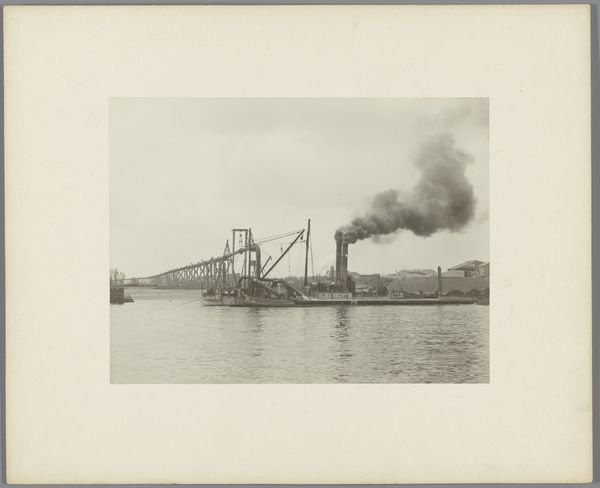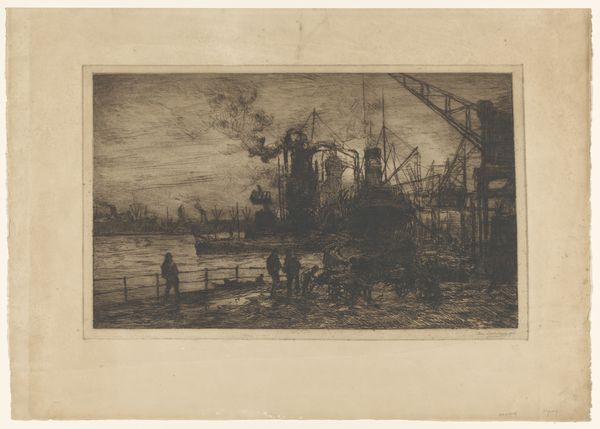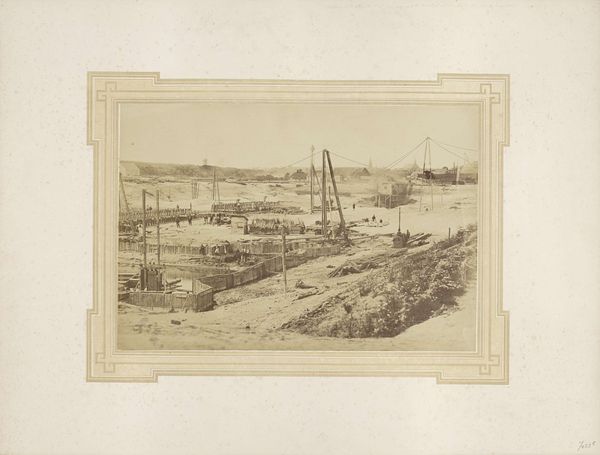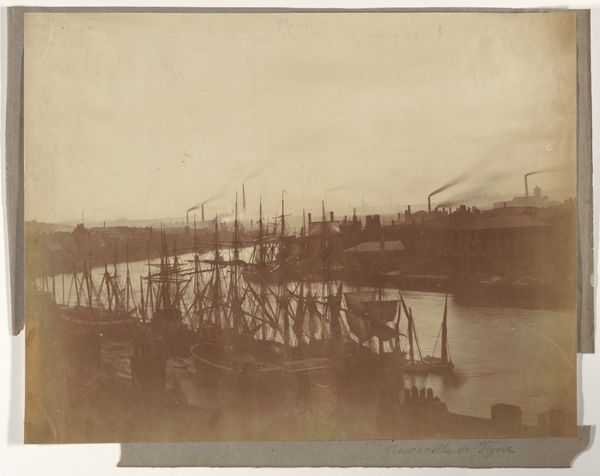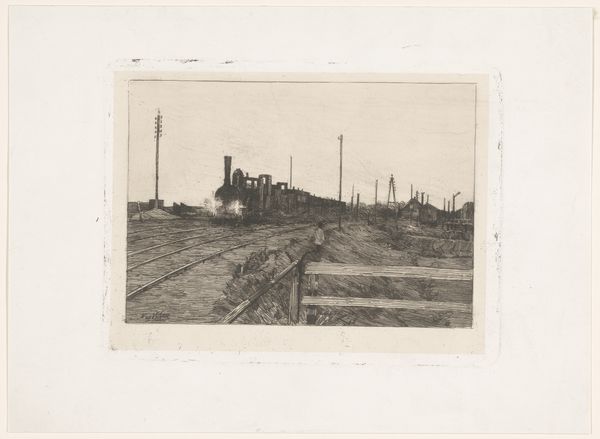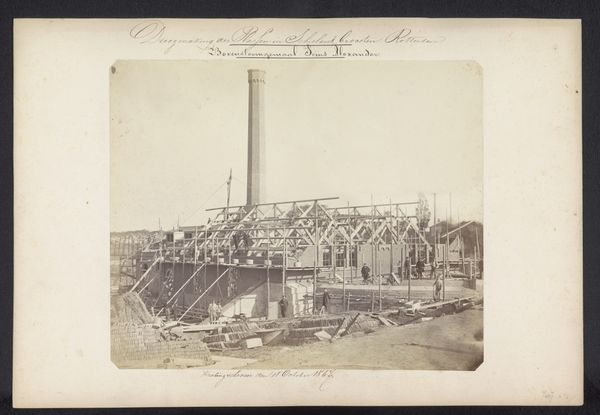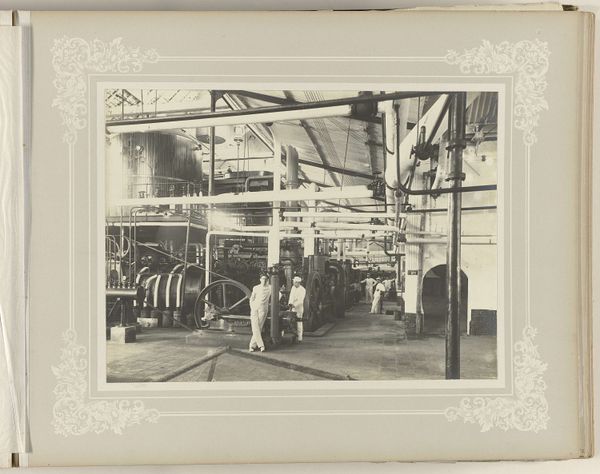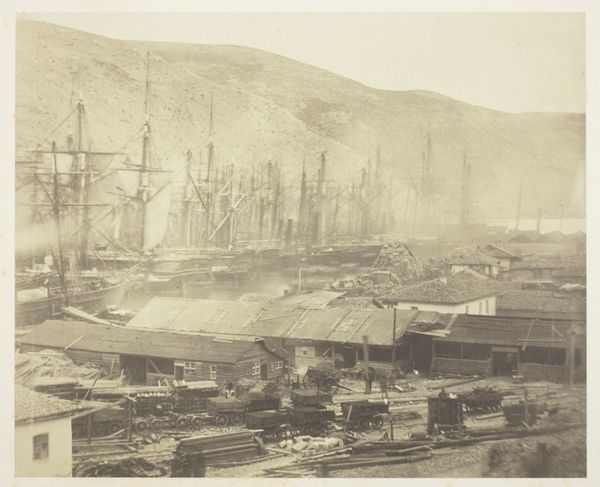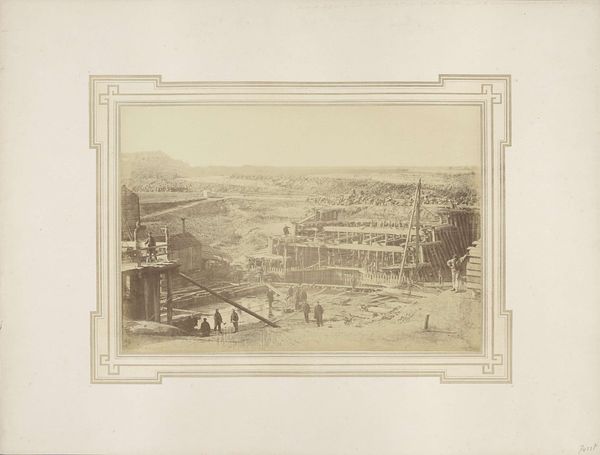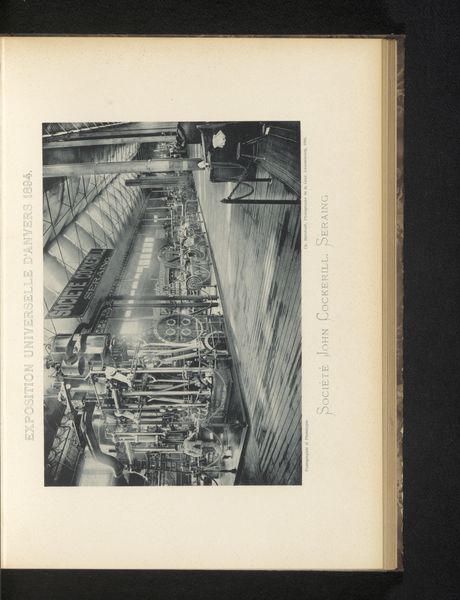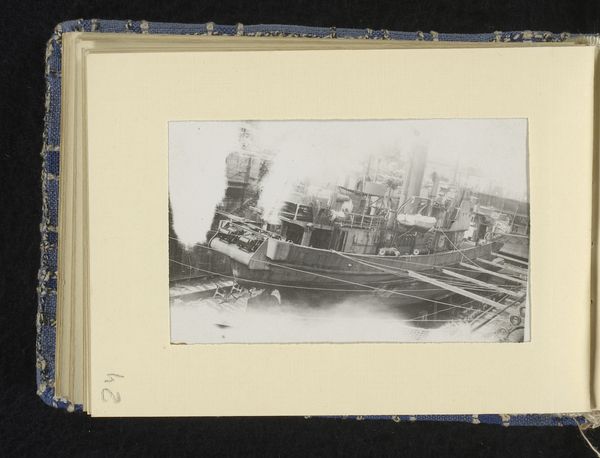
Heiwerk voor de schutsluis ten westen van Terneuzen Possibly 1902
0:00
0:00
print, cyanotype, photography
#
print photography
# print
#
landscape
#
cyanotype
#
photography
#
realism
Dimensions: height 291 mm, width 387 mm, height 299 mm, width 403 mm
Copyright: Rijks Museum: Open Domain
Curator: This photogravure, a cyanotype print, is titled "Pile-driving for the lock west of Terneuzen" and is attributed to Carl Wilhelm Bauer, dating possibly to 1902. The location depicted is, as the title suggests, Terneuzen, and it's now held at the Rijksmuseum. My initial reaction is the atmospheric quality. It’s heavy, industrious. Editor: That deep blue really permeates the image, lending an almost dreamlike quality to this scene of industrial activity. Notice how the tones are modulated to create depth and draw your eye across the workers who almost disappear into the landscape? Curator: Absolutely, the monochromatic palette flattens and unifies the disparate elements of the composition: the figures of the workers, the mechanical structures, and the land all exist as one compositional mass. It draws your attention, yes, but perhaps more so to the abstract form being rendered here. It strikes me as primarily a work interested in form and space rather than pure representational record. Editor: Yet, consider the symbol of pile-driving itself, what this image tells us about industrialisation. This would have been a moment of colossal, potentially transformative change. Look at the people, united under the common symbolic drive to innovate, modernize, move forward, irrespective of individual status or economic disparity. And this arresting blue is the color of blueprints, the stuff of possibility, the vast open future that Terneuzen must have symbolized to the Netherlands. Curator: I find your interpretation compelling, but let's not overlook how the photographer is playing with perspective. The artist employs the scene and tonal contrast to organize near-and-far spatial planes. The result is a dynamic tension of forms between planes that invite scrutiny from the careful viewer. The realism here is constructed. Editor: Indeed. The photograph almost presents two distinct realities: the sharp details in the industrial processes and people that are slightly overshadowed, and the ethereal world with dreamlike potential as symbolized in its vast future, so compelling and real. The choice of process further lends a patina of nostalgia, transforming a construction site into a kind of timeless industrial creation myth. Curator: A tension between form and symbol: a vital space of thought in visual representation and cultural history. Editor: Precisely! This image is both visually arresting and conceptually evocative.
Comments
No comments
Be the first to comment and join the conversation on the ultimate creative platform.
